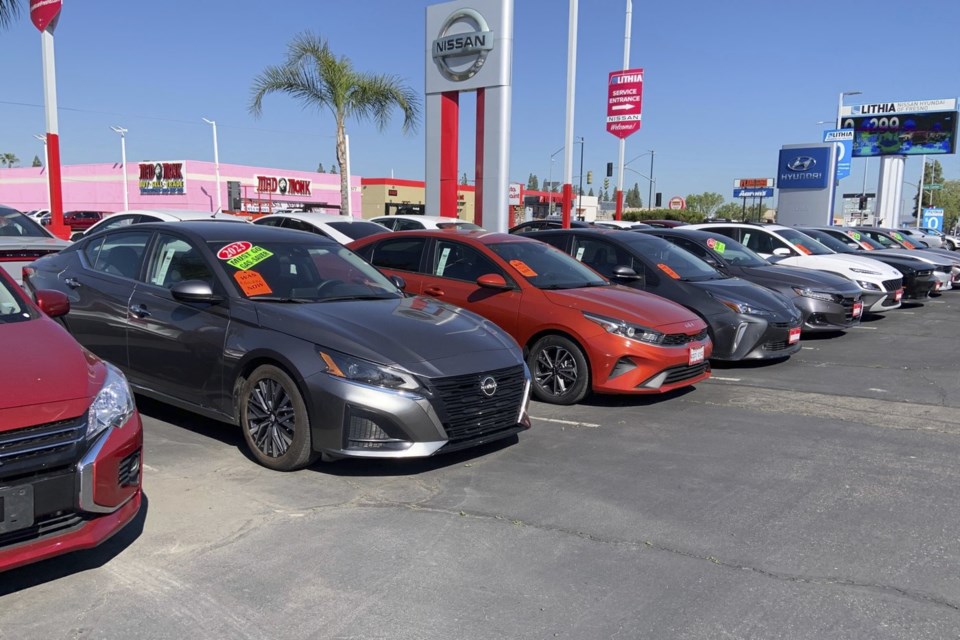If you’re shopping for a used car this summer, you may have noticed something frustrating: Prices are climbing again. According to the latest Edmunds’ Used Car Report, the average transaction price for a 3-year-old used vehicle has reached $30,522 (all figures USD). That’s up 2.3% from the same time last year and marks the first time since mid-2023 that this number has climbed back over the $30,000 mark.
Many people expected used car prices to cool off as new vehicle production recovered post-pandemic. But as the latest data shows, that’s not happening just yet — and shoppers should understand why.
What’s driving used car price increases?
The root cause of today’s high used car prices is limited supply. Edmunds found that the average age of trade-in vehicles was 7.6 years during the first quarter of 2025. That’s the oldest average since 2019, meaning fewer “near-new” vehicles — like lease returns or late-model trade-ins — are entering the used market.
With fewer low-mileage recent-model-year vehicles available, shoppers compete for a smaller pool of in-demand inventory. That competition keeps prices high, particularly for popular models.
Tariffs, too, can influence demand for used cars. True, used cars aren’t directly subject to tariffs. But higher new-car pricing because of tariffs will undoubtedly force some additional people to consider buying a used car as a more affordable alternative.
Slowing down in a tight market
Another sign of the shifting market: The average used vehicle spent 38 days on a dealer’s lot before being sold in the first three months of this year. That’s the longest time Edmunds has recorded since early 2021.
This slower pace suggests both buyers and sellers are approaching the market cautiously. Dealers may be holding firm on pricing, knowing supply is tight. At the same time, the reduced pace may also indicate that buyers are taking longer to find the right match in a smaller market.
Should you buy now or wait?
Deciding whether to buy now or hold off depends on your situation. If you need a vehicle immediately, it still makes sense to shop — but it’s important to be realistic. Don’t expect dramatic deals or fast-moving price cuts. Instead, look for well-maintained models with strong reliability records, and be open to adjusting your expectations regarding extras and options.
There’s a chance more inventory will reach the market later in 2025. Edmunds’ data shows that dealers are still short on fresh trade-ins, but that could change as new vehicle production stabilizes and more consumers upgrade their cars. A modest increase in the used supply could help ease pricing pressure.
Still, it’s unlikely that prices will return to pre-2020 levels. The industry continues to feel the effects of pandemic-era production cuts, and even a return to more typical production levels won’t immediately solve the current imbalance between supply and demand.
What you can do to get the best deal
Shoppers can take smart steps to get more value in today’s market. For starters, flexibility is key. Expanding your search radius to neighbouring regions can open up more options. Considering less popular trims, colours or brands can also help you find better pricing.
Certified pre-owned vehicles may carry a slight premium, but they often include extended warranties and thorough inspections. That added security can be worth it — especially when prices are high and buyers are more concerned than ever about getting a good value.
It also helps to be informed. Online tools and data can help you track average prices, check vehicle histories, and compare models across categories. Knowing what’s typical for the car you want gives you a stronger position when it’s time to negotiate.
Edmunds says
The used car market in 2025 is anything but predictable. Inventory is still recovering from pandemic-era disruptions, and both shoppers and dealers are tightening the purse strings. For buyers, that means patience, planning and flexibility are more important than ever.
If you need to buy now, being open to alternatives to your ideal car may help uncover better value. And if you’re able to wait, keeping a close eye on market conditions may give you an edge when inventory improves.
____
This story was provided to The Associated Press by the automotive website . Josh Jacquot is a contributor at Edmunds.
Josh Jacquot, The Associated Press



